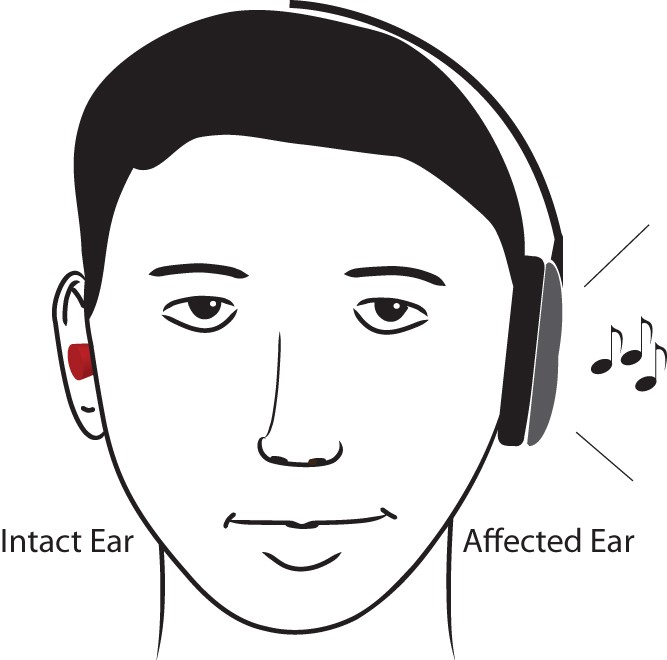Sound therapy affects the brain by stimulating neural pathways, promoting relaxation and reducing stress levels. The neuroscience of sound therapy delves into how sound waves impact brain function and emotional well-being.
Sound therapy is a holistic approach that harnesses the power of sound vibrations to restore balance and harmony in the mind and body. By understanding the intricate connections between sound and the brain, researchers have uncovered the profound effects of sound therapy on cognitive processes and mental health.
This innovative therapeutic technique has gained popularity for its ability to enhance mood, improve focus, and alleviate symptoms of anxiety and depression. Let’s explore the fascinating realm of sound therapy and its profound impact on the human brain and overall well-being.
The Science Behind Sound Therapy
Acoustic Foundations
Sound therapy utilizes the principles of physics and acoustics to harness the power of sound for therapeutic purposes. Sound waves are the foundational element, carrying vibrations that can resonate with the body and mind. These waves travel through the air and enter our ears, where they trigger a complex cascade of physiological responses.
Physiological Responses To Sound
When we are exposed to sound, our bodies react in profound ways. The auditory nerve carries these sound signals to the brain, where they stimulate the release of neurotransmitters like dopamine and serotonin. Heart rate and blood pressure can be influenced, while the autonomic nervous system may shift into a more relaxed state. The intricate interplay between sound and our physiological responses highlights the potential for sound therapy to impact our well-being.
Historical Context Of Audio Healing
Exploring the historical context of audio healing unveils a rich tapestry of ancient practices and their modern adaptations. Through the ages, sound therapy has played a crucial role in promoting physical, emotional, and spiritual well-being. Let’s delve into the fascinating world of audio healing and its evolution.
Ancient Practices
Ancient civilizations such as the Egyptians, Greeks, and Indigenous cultures utilized sound as a therapeutic tool. Chanting, drumming, and the use of specific musical scales were believed to harmonize the body and mind, promoting healing and spiritual connection.
In Eastern traditions, the use of mantras and singing bowls dates back thousands of years, with the vibrations of these sounds thought to bring about balance and tranquility.
Modern Adaptations
In the modern era, audio healing has experienced a resurgence with the development of various modalities such as binaural beats, isochronic tones, and sound baths. These techniques harness the power of sound frequencies to induce states of relaxation, reduce stress, and enhance cognitive function.
Moreover, advancements in technology have led to the creation of sound therapy apps and personalized audio programs, making the benefits of sound healing more accessible to a wider audience.
Brain Waves And Sound Therapy
Sound therapy has a profound impact on brain waves, according to the neuroscience of sound therapy. By utilizing specific frequencies and patterns, sound therapy can stimulate or calm brain activity, providing potential benefits for stress reduction, sleep improvement, and overall well-being.
Sound therapy has been gaining popularity as an effective way to promote relaxation, reduce stress, and improve overall well-being. It involves the use of different sounds, such as music, nature sounds, and white noise, to stimulate the brain and promote healing. One of the ways that sound therapy works is by influencing brain waves. In this section, we will discuss the different brain wave patterns and how sound therapy can influence them.
Understanding Brain Wave Patterns
The brain is constantly producing electrical activity, which can be measured in the form of brain waves. There are four main types of brain waves, each with a different frequency and associated with different states of consciousness. These are:
- Beta waves (12-30 Hz): Associated with active thinking, problem-solving, and concentration.
- Alpha waves (8-12 Hz): Associated with relaxation, creativity, and meditation.
- Theta waves (4-8 Hz): Associated with deep relaxation, dreaming, and hypnosis.
- Delta waves (0.5-4 Hz): Associated with deep sleep and unconsciousness.
Influencing Brain Waves With Sound
Sound therapy can influence brain waves by using sounds that are specifically designed to promote certain states of consciousness. For example, binaural beats are a type of sound therapy that involves playing two different tones in each ear, which creates a third tone that the brain perceives as a beat. This beat can be adjusted to match the frequency of a specific brain wave pattern, such as alpha or theta waves, which can help to induce a relaxed or meditative state.
Other types of sound therapy include listening to music with a slow tempo or a repetitive rhythm, which can help to slow down brain wave activity and promote relaxation. Nature sounds, such as ocean waves or birdsong, can also be used to promote a sense of calm and reduce stress.
In conclusion, sound therapy is a powerful tool that can be used to influence brain waves and promote relaxation, creativity, and overall well-being. Whether you prefer listening to music, nature sounds, or white noise, there are many different types of sound therapy that can help you to achieve a more relaxed and focused state of mind.
Sound Therapy Techniques
Sound therapy techniques utilize various auditory stimuli to promote relaxation and improve mental well-being. These techniques leverage the power of sound frequencies to positively impact brain activity and emotional states.
Binaural Beats
Binaural beats involve playing two slightly different frequencies in each ear to create a perceived third frequency. This technique can induce states of relaxation and focus.
Isochronic Tones
Isochronic tones are evenly spaced sound pulses that can entrain the brain to specific frequencies. These tones are known for enhancing meditation practices and promoting mental clarity.
Solfeggio Frequencies
Solfeggio frequencies are specific tones with purported healing properties. Each frequency is believed to have unique effects on the mind and body, aiding in stress reduction and emotional balance.
Clinical Applications Of Sound Healing
Explore the fascinating field of sound healing in clinical settings, focusing on the neuroscience behind sound therapy. Discover how sound vibrations positively impact brain function and emotional well-being, leading to potential breakthroughs in holistic healthcare practices.
Stress Reduction
The clinical application of sound healing in stress reduction has gained significant attention in recent years. Sound therapy utilizes specific frequencies and vibrations to induce a state of deep relaxation, allowing the body and mind to release tension and stress. Research has shown that exposure to certain sound frequencies can stimulate the production of endorphins, which are natural mood-boosting chemicals in the brain. This can help individuals experiencing stress to feel calmer, more centered, and better equipped to cope with everyday challenges.
Cognitive Function Improvement
The impact of sound therapy on cognitive function improvement has been a subject of interest among neuroscientists. Studies suggest that certain sound frequencies can enhance brainwave activity and promote greater focus, concentration, and mental clarity. By stimulating specific areas of the brain associated with cognitive function, sound healing techniques may help individuals improve memory, attention span, and overall cognitive performance. This can be particularly beneficial for individuals with neurodegenerative conditions or those seeking to enhance their mental acuity.
Pain Management
One of the most widely recognized clinical applications of sound healing is in the field of pain management. Sound therapy has been found to have analgesic properties, offering relief from chronic pain conditions such as migraines, fibromyalgia, and arthritis. The vibrations and frequencies used in sound healing can stimulate the release of endorphins, which act as natural painkillers in the body. Additionally, sound therapy can help reduce muscle tension and inflammation, providing further relief from pain and discomfort.
Moreover, sound healing techniques can also promote the production of oxytocin, a hormone that induces feelings of relaxation and well-being. This can contribute to a holistic approach to pain management, addressing both the physical and emotional aspects of pain.

Credit: www.nature.com
The Role Of Music In Sound Therapy
Music plays an essential role in sound therapy, which leverages the neuroscience of sound to improve mental and physical wellbeing. Research shows that sound vibrations can stimulate brainwaves, enhance mood, and reduce stress, making it a powerful tool for healing and relaxation.
Music As A Therapeutic Tool
Music has been an essential part of human life since ancient times. It has the power to evoke emotions and influence our moods. Music therapy is a form of sound therapy that uses music to improve a person’s physical, emotional, and cognitive well-being. Music therapists use a variety of musical instruments and techniques to create a healing environment that promotes relaxation, reduces stress, and enhances overall health.
Music And Emotional Well-being
Research has shown that music has a profound impact on emotional well-being. Listening to music can trigger the release of dopamine, a neurotransmitter that is associated with pleasure and reward. This can lead to feelings of happiness, joy, and contentment. Music therapy has been shown to be effective in treating depression, anxiety, and other mood disorders.
Using Music In Sound Therapy
Sound therapy involves the use of sound waves to promote healing and relaxation. Music is a powerful tool in sound therapy because it has a predictable rhythm and tempo that can be used to regulate brain waves and induce a meditative state. Music therapists often use specific genres of music, such as classical or new age, to create a calming atmosphere that promotes relaxation and reduces stress.
Benefits Of Music In Sound Therapy
The benefits of using music in sound therapy are numerous. Music can help to reduce anxiety, promote relaxation, and improve mood. It can also help to improve cognitive function, enhance creativity, and promote overall well-being. Additionally, music therapy has been shown to be effective in treating a variety of conditions, including chronic pain, insomnia, and post-traumatic stress disorder.
Music is a powerful tool in sound therapy. It has the ability to evoke emotions, promote relaxation, and improve overall well-being. By incorporating music into sound therapy sessions, therapists can create a healing environment that promotes physical, emotional, and cognitive health.
Case Studies And Research Findings
Exploring the fascinating world of sound therapy through the lens of neuroscience reveals a wealth of insights from case studies and research findings.
Documented Benefits
1. Reduced stress and anxiety levels.
2. Improved sleep quality and patterns.
3. Enhanced focus and concentration.
4. Alleviation of symptoms related to PTSD.
5. Boosted mood and overall well-being.
Areas Needing Further Research
1. Long-term effects of sound therapy.
2. Impact on specific neurological conditions.
3. Comparative effectiveness with traditional therapies.
4. Optimal frequency and duration for maximum benefits.

Credit: www.nih.gov
Integrating Sound Therapy Into Daily Life
Easily integrate sound therapy into your daily routine to leverage the neuroscience of sound therapy for enhanced well-being and focus. By incorporating calming sounds and music, you can tap into the power of sound to reduce stress and improve cognitive function, promoting a more balanced and centered lifestyle.
Integrating Sound Therapy into Daily Life
Creating a Personalized Sound Environment
Creating a personalized sound environment is key to maximizing the benefits of sound therapy. Consider using calming nature sounds or soothing music in your space.
Sound Therapy in Wellness Routines
Incorporating sound therapy into your wellness routines can enhance relaxation and stress relief. Try listening to music or guided meditations during your self-care practices.
Personalized Sound Environment Table
| Sound Environment Elements | Benefits |
|—————————|———-|
| Calming nature sounds | Reduce stress levels |
| Soothing music | Enhance relaxation |
– Sound therapy can be integrated into daily life through personalized environments.
– Utilize calming sounds and music to enhance relaxation and reduce stress.
– Incorporate sound therapy into wellness routines for added benefits.
Embrace the power of sound therapy in your daily life to promote overall well-being.
Future Directions In Audio Healing
The neuroscience of sound therapy is shaping future directions in audio healing. Researchers are exploring how specific frequencies and patterns of sound can positively impact brain function and emotional well-being, paving the way for innovative audio-based treatments.
Sound therapy has been used for centuries to promote healing and relaxation. With the advancement of neuroscience, we now have a better understanding of how sound affects the brain and body. As a result, audio healing is becoming more popular, and we are seeing new developments in the field. Here are some of the future directions in audio healing:
Technological Advances
As technology continues to advance, we can expect to see new tools and devices that will enhance the effectiveness of sound therapy. For example, there are already apps and devices that use binaural beats to stimulate specific brainwave frequencies. In the future, we may see more advanced devices that can create customized soundscapes based on an individual’s unique needs.
Expanding Accessibility
While sound therapy has been used for centuries, it has not always been accessible to everyone. However, with the rise of digital technology, audio healing is becoming more accessible than ever before. Online platforms and apps are making it possible for anyone to access sound therapy from anywhere in the world. This is particularly important for people who live in areas where traditional healing practices are not readily available.
In conclusion, the future of audio healing looks bright. With new technological advancements and expanding accessibility, more people will be able to benefit from the healing power of sound therapy. It is an exciting time for this field, and we can expect to see even more developments in the future.

Credit: www.nexusstudiopt.com
Frequently Asked Questions
How Does Sound Therapy Affect The Brain?
Sound therapy can positively impact the brain by reducing stress, enhancing relaxation, and improving focus. The brain responds to specific frequencies, promoting a state of calm and balance, which can lead to improved cognitive function and emotional well-being.
What Conditions Can Sound Therapy Help With?
Sound therapy can be beneficial for managing conditions such as anxiety, insomnia, and chronic pain. By promoting relaxation and reducing stress, it can also support overall mental and emotional wellness, offering a non-invasive approach to improving quality of life.
What Are The Different Types Of Sound Therapy?
Various types of sound therapy include binaural beats, gong therapy, and sound baths. Each method utilizes specific sound frequencies and vibrations to achieve different therapeutic effects, such as deep relaxation, improved sleep, and enhanced mental clarity.
Is Sound Therapy Suitable For Everyone?
Sound therapy is generally safe for most people, but individuals with certain medical conditions or hearing impairments should consult a healthcare professional before participating. Additionally, pregnant women or individuals with pacemakers should seek guidance to ensure the therapy is appropriate for them.
Conclusion
To sum up, the field of neuroscience has shed light on the remarkable benefits of sound therapy. By tapping into the brain’s response to auditory stimuli, this therapeutic approach has shown promise in reducing stress, improving sleep quality, and enhancing overall well-being.
As we continue to delve into the intricate workings of the brain, sound therapy presents a fascinating avenue for promoting mental and emotional wellness. Embrace the power of sound and unlock its potential for a healthier mind and body.





